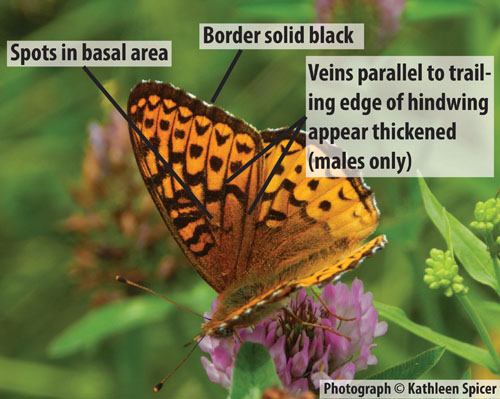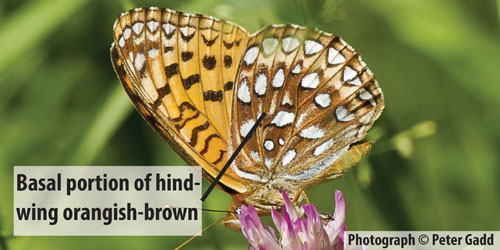Atlantis Fritillary (Speyeria atlantis)
Description: Atlantis Fritillary is similar to the other large fritillaries, though it is generally smaller and darker, and has blue as opposed to brown eyes (eyes turn brown in all fritillaries after death). It is best distinguished from Great Spangled Fritillary by its smaller size, the presence of a dark spot near the base of the forewing upperside, and the presence of a solid black border on the forewing upperside. It is distinguished from Aphrodite Fritillary by the presence of solid black subamarginal bands on the upperside, and by its much darker hindwing underside (see Aphrodite Fritillary profile for further details). Wingspan: 50 to 64 mm.
Maritime Distribution: Throughout the Maritimes. For Atlas results click here.
Provincial Ranks: NB: S5. NS: S5. PEI: S5.
Flight Period: Mid June to early September.
Host Plant: Various violets (Viola spp.).
Notes: Our most common and widespread fritillary, the Atlantis Fritillary occurs in a variety of forest associated open habitats. It is more likely to be found away from meadows and clearings than the other large fritillaries, and is often seen along forested trails and wood roads. All large fritillaries are avid flower visitors, sometimes occurring in large numbers around thistles, clover and dogbane patches.


